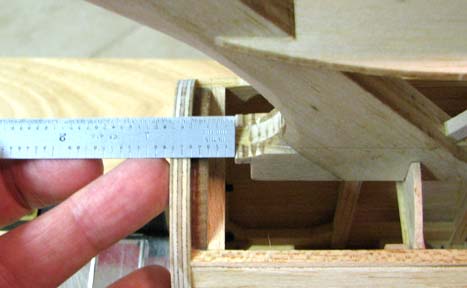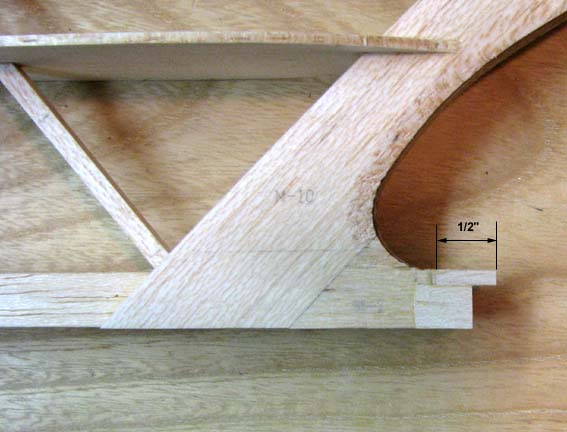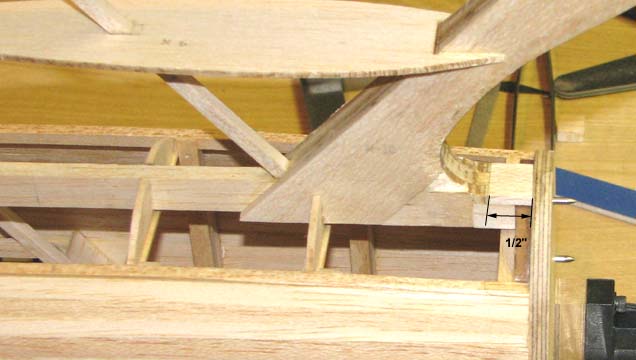Comet
Sailplane Project
Before I glued the pylon frame to the fuselage
structure permanently, I got to thinking about how and where I had placed
the pylon on the fuselage. As the picture below shows, I have to count on
the weight of the wing to shift the wing off CG forward by one full inch
to achieve the desired CG of 62%. This was troublesome because I was not
sure the wing will move the CG that far, which would require ballast
weight up front to achieve the desired CG.

Using some actual Sailplane component weight
measurements provided by Steve Rozelle and methodology by Alfredo Herbon, a
calculation estimate showed the Sailplane's wing weight would shift the wing
off CG forward by only 0.70". An estimate of the Sailplane model's
sensitivity to ballast weight in the nose showed a 0.12 inch of forward CG
shift per ounce of ballast weight. Based on these estimates, over 2-1/2
ounces of ballast might be required to achieve the desired CG of 62%.
I decided to use the recommendation of Jim
O'Reilly to move the pylon frame aft 1/2 inch from its previous location on
the fuselage structure. So I cut the tack glued spots on the top bulkheads
loose and removed the pylon from the fuselage structure as shown below,
which went surprising well.

The aft part of the lower member of the pylon
frame was cut off 1/2" and the pylon moved back as shown below.

The front of the pylon lower member was extended
a 1/2" using two pieces of balsa as shown below.

Finally the pylon was reinstalled 1/2" aft from
its previous position as shown below.

If the above calculations are even close, the
weight of the wing can easily shift the wing off CG forward by 1/2" and
maybe a little more, which is reasonable and certainly more conservative
from a balance point of view............................Tandy